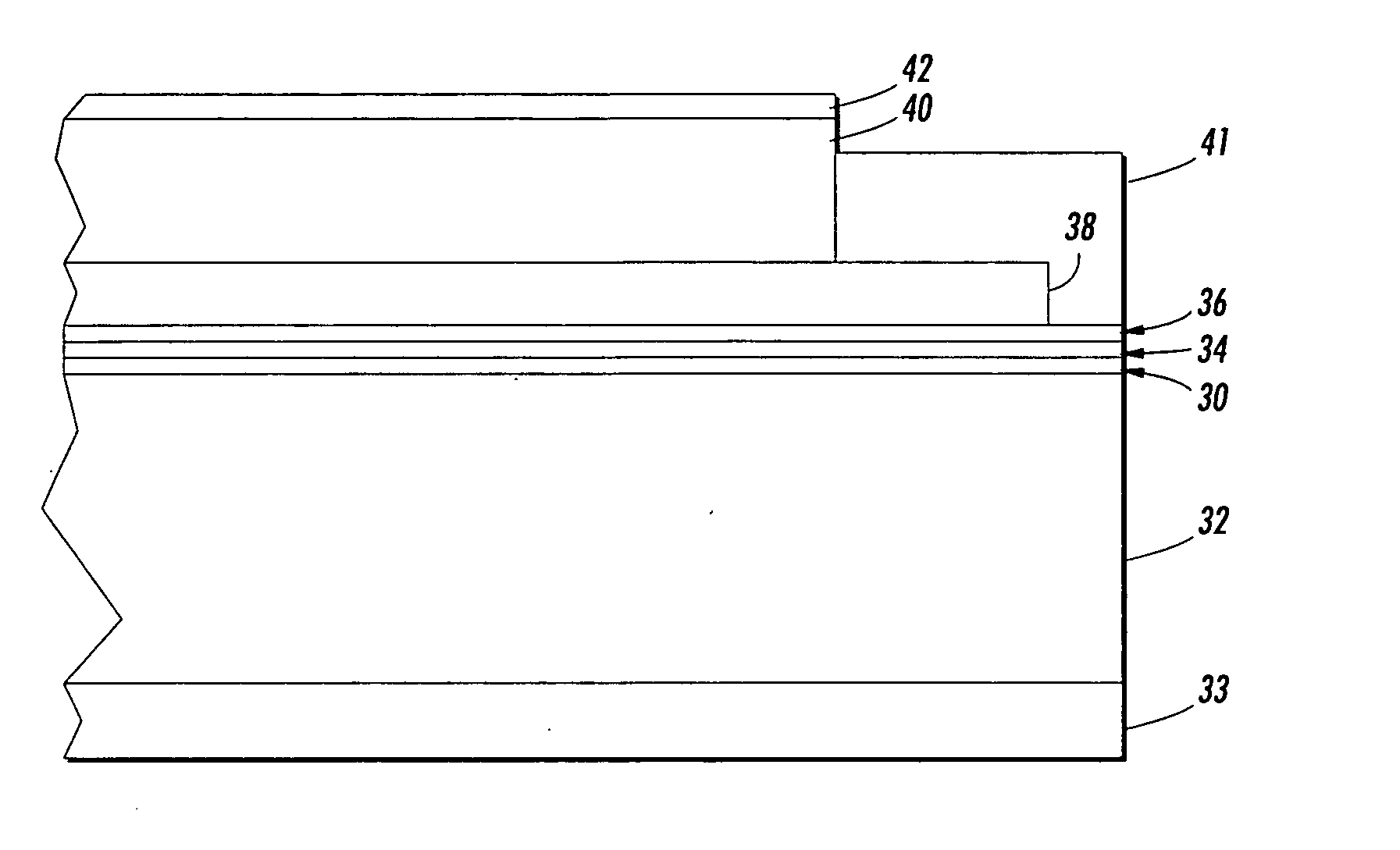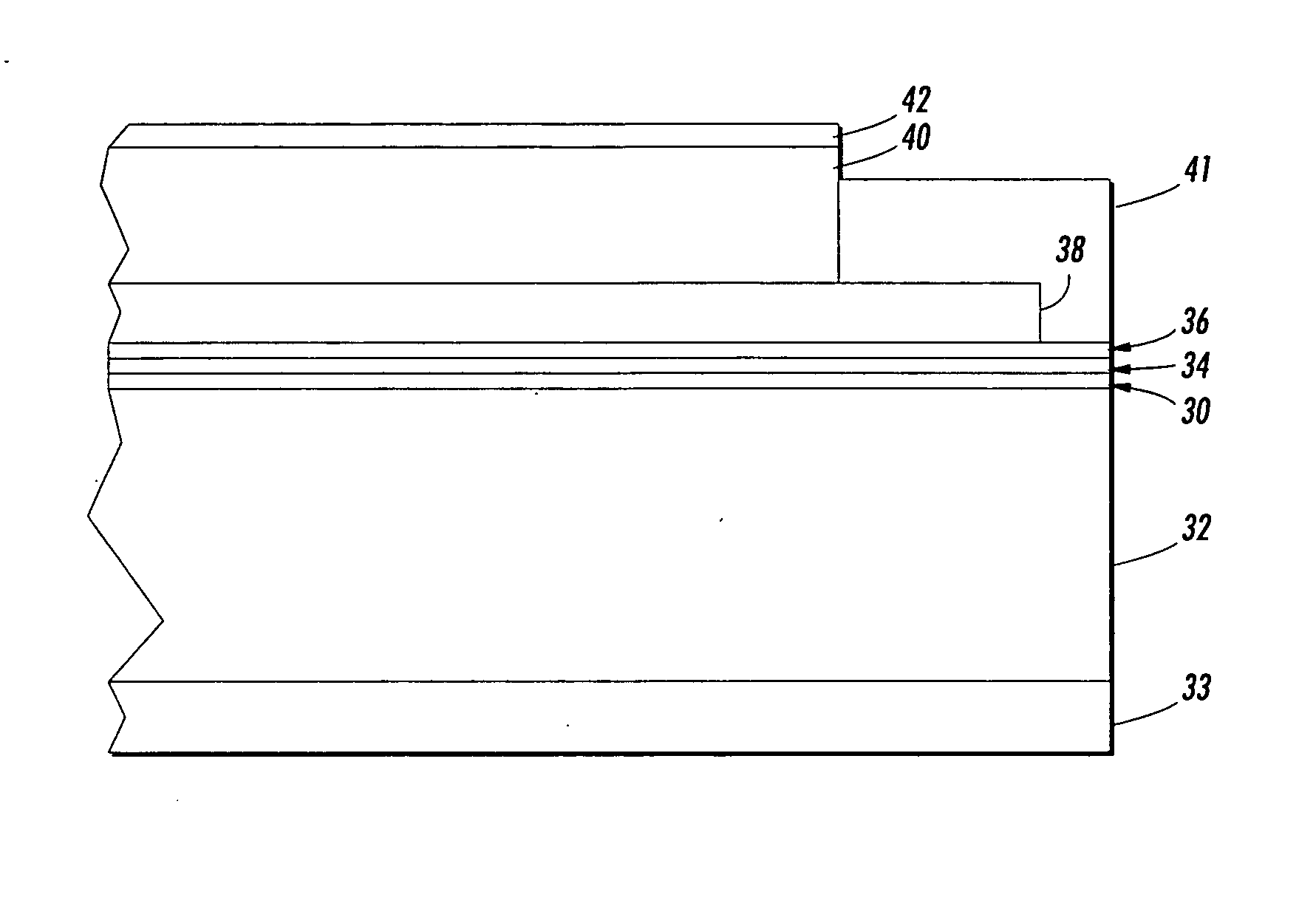Imaging member
a technology of electrophotographic imaging and electrophotography belt, which is applied in the direction of photosensitive materials, auxillary/base layers of photosensitive materials, instruments, etc., can solve the problems of not all solvent can be removed from the acbc, shorten the service life of the imaging belt, and substantial wear of the acbc, so as to prolong the functional life of the flexible electrophotographic imaging member, increase the wear resistance and ozone attack resistance, and increase the surface lub
- Summary
- Abstract
- Description
- Claims
- Application Information
AI Technical Summary
Benefits of technology
Problems solved by technology
Method used
Image
Examples
control example 1
[0067] A flexible electrophotographic imaging member web was prepared by providing a 0.02 micrometer thick titanium layer coated on a substrate of a biaxially oriented polyethylene naphthalate substrate (KADALEX, available from DuPont Teijin Films.) having a thickness of 3.5 mils (89 micrometers). The titanized KADALEX substrate was extrusion coated with a blocking layer solution containing a mixture of 6.5 grams of gamma aminopropyltriethoxy silane, 39.4 grams of distilled water, 2.08 grams of acetic acid, 752.2 grams of 200 proof denatured alcohol and 200 grams of heptane. This wet coating layer was then allowed to dry for 5 minutes at 135° C. in a forced air oven to remove the solvents from the coating and effect the formation of a crosslinked silane blocking layer. The resulting blocking layer had an average dry thickness of 0.04 micrometer as measured with an ellipsometer.
[0068] An adhesive interface layer was then applied by extrusion coating to the blocking layer with a coat...
example 1
Disclosure Example 1
[0075] A flexible electrophotographic imaging member web was fabricated using the same materials and the same process as that described in Control Example 1, except that the anti-curl back coating solution was prepared to include a Bisphenol A bisallyl carbonate monomer as shown in Formula (II) (HIRI®, commercially available from PPG, Inc.). The coating solution was then applied onto the rear surface of an imaging member web and followed by subsequent drying at elevated temperature to give an imaging member web stocks having 5 wt % HIRI® based on the resulting dried weight of the anti-curl back coating. The thickness of the layer was 17 micrometers.
[0076] To assess the extent of polycarbonate degradation as a result of ozone exposure, 8″×10″ free standing anti-curl back coating (ACBC) coatings were prepared according to Control Example 1 and Disclosure Example 1 and subjected to an ozone exposure test. In essence, two sets of test samples ...
example 2
Disclosure Example 2
[0081] Three flexible electrophotographic imaging member webs were fabricated using the same materials and the same process as described in Disclosure Example 1, except that the anti-curl back coating solution also contained slip agent (from BYK-Chemie USA). The resulting three webs incorporated 5 wt % HIRI® and 0.5, 2, and 4 wt % slip agent respectively, based on the total weight of the anti-curl back coating.
Friction, Wear, and Lubricity Testing
[0082] The coefficient of friction, wear resistance, and lubricity of the three ACBCs of Disclosure Example 2 were evaluated against the ACBC of Control Example 1 (which had no HIRI or slip agent). The coefficient of friction (CoF) was measured against a charge transport layer (CTL) (made of 50 wt % MAKROLON and 50 wt % N,N′-diphenyl-b,N′-bis(3-methylphenyl)-1,1′-biphenyl-4,4′-diamine) and also against ACT rubber. The ACT rubber simulated mechanical interaction between the ACBC and the belt support drive-roll during dy...
PUM
 Login to View More
Login to View More Abstract
Description
Claims
Application Information
 Login to View More
Login to View More - R&D
- Intellectual Property
- Life Sciences
- Materials
- Tech Scout
- Unparalleled Data Quality
- Higher Quality Content
- 60% Fewer Hallucinations
Browse by: Latest US Patents, China's latest patents, Technical Efficacy Thesaurus, Application Domain, Technology Topic, Popular Technical Reports.
© 2025 PatSnap. All rights reserved.Legal|Privacy policy|Modern Slavery Act Transparency Statement|Sitemap|About US| Contact US: help@patsnap.com



